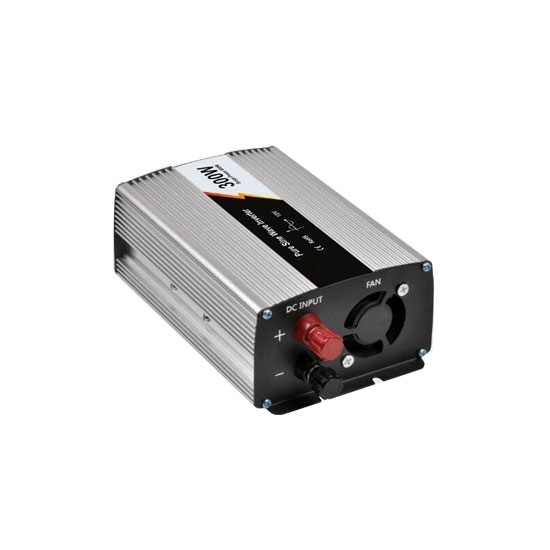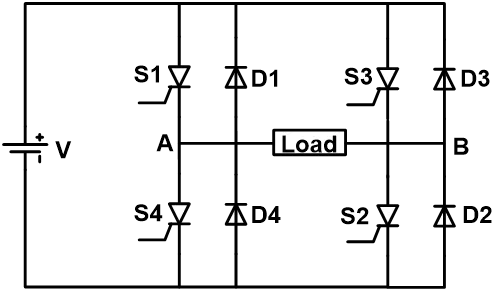An inverter (or power inverter) is a power electronics device which used to convert DC voltage into AC voltage. Although DC power is used in small electrical gadgets, most household equipment runs on AC power. Hence we need an efficient way to convert DC power into AC power.
The inverter is a static device. It can convert one form of electrical power into other forms of electrical power. But it cannot generate electrical power. Hence the power inverter is a converter, not a generator.

Let’s understand the working of an inverter by an example. One bulb connected with a battery. It makes a close path. Hence the current will flow through the bulb. The bulb has two terminals that are ‘A’ and ‘B’. The positive and negative terminal of the battery is connected with ‘A’ and ‘B’ terminal respectively and the bulb will glow.
Now, change the terminals of the battery. The bulb will glow in this condition also. So, what is the difference in both cases? Here, one thing is different and that is the direction of the AC current.
This is just to understand the working principle of an inverter. Practically, inverter never works like this and it doesn’t have rotating parts. The inverter uses the power electronics switches like IGBT, MOSFET. The number of switches depends on the type of inverter.
Let’s take a circuit diagram of a single-phase full-bridge inverter to understand the working.

There are four switches. A DC source connected with the switches and load.
When switch S1 and S2 are ON, S3 and S4 OFF, the direction of current through the load are positive in this condition. It gives a positive half cycle of the AC output. Now, switch S3 and S4 is ON, S1 and S2 OFF. The current flowing in the opposite direction. It gives a negative half cycle of the AC output.
The ON and OFF time of switches decides the output frequency. The output of the inverter is a square wave. The filters used to generate a sine wave.
